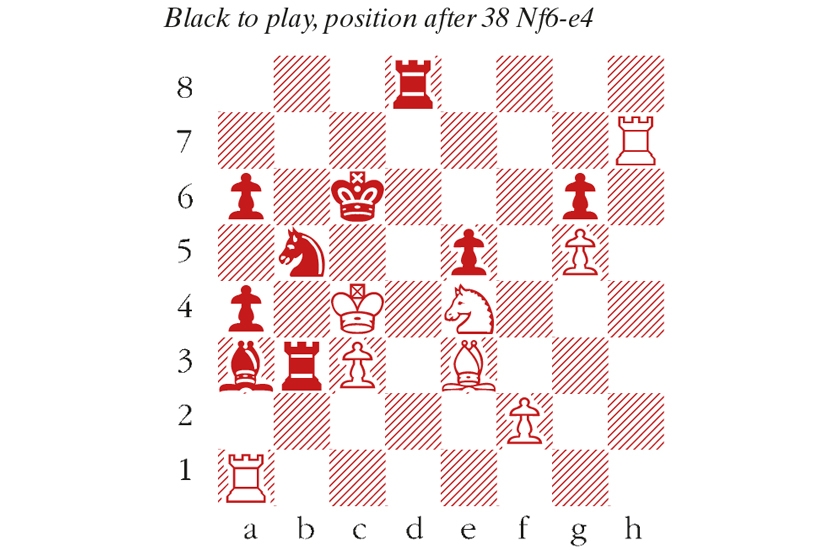Writing in January, I described internet bullet chess, where the players have one minute for all their moves, as ‘popular, addictive and pointless’. Bullet games are shallow and unwholesome because if you stop to think, you lose the game on time. Never mind a junk food tax: taxing bullet chess is the real social imperative — or indeed banning it. Blitz chess, where the players have three or five minutes per move, is a much healthier proposition. The pleasure of a well-played blitz game goes beyond a mere adrenalin rush and the experience might well be beneficial — as part of a balanced diet, of course.
Were he alive, I presume that Mikhail Botvinnik, the Soviet world champion, would take exception even with that. ‘The last time I played blitz was in 1929, on a train,’ was his withering comment in 1988. Even in the pre-internet era, that distaste for blitz was rather extreme. After all, the 1988 World Blitz Championship in Canada included Kasparov, Karpov and Tal in the lineup. (Mikhail Tal relished blitz chess and won the event.)
Still, my qualified embrace of speed chess is a pretty orthodox point of view, which was echoed this month by Vladimir Kramnik, in an interview he gave after winning the Razuvaev Memorial, an online blitz tournament. ‘I am not against blitz in general, but bullet is harmful to young players. First, it loosens the nervous system; second, it develops the habit of playing impulsively.’ So I was taken aback by Danish grandmaster Peter Heine Nielsen’s tweeted response: ‘I used to think so too, but the present generation has proven that wrong.’ Nielsen is Magnus Carlsen’s coach, and it struck me that he is probably right. Carlsen himself is an exceptional bullet player, as is Hikaru Nakamura. Perhaps they no longer qualify as young players (Carlsen turns 30 later this month). If so, one can easily point to several younger players who are on the way up, like Alireza Firouzja, Vladislav Artemiev and Nihal Sarin — all are outstanding in bullet chess and slower forms of the game. It seems far-fetched to say that these brilliant players would be even better without bullet chess. I don’t know whether it helps them, but it doesn’t look like a hindrance.
The following bullet game was played in the last 16 of the chess.com Speed Chess Championship knockout, an online event featuring most of the world’s best players. Caruana started well in the blitz games, but was crushed by Duda in the bullet games (played with one minute each plus one added second per move). The final game of the match featured a beautiful finish. It is astounding that in the diagrammed position, Duda took around a second and a half to find the winning move.
Fabiano Caruana—Jan-Krzysztof Duda
chess.com Speed Chess Championship, November 2020
1 e4 c5 2 Nf3 d6 3 d4 cxd4 4 Nxd4 Nf6 5 Nc3 a6 6 Rg1 e5 7 Nb3 Be6 8 g4 d5 9 exd5 Nxd5 10 Bg2 Nxc3 11 Qxd8+ Kxd8 12 bxc3 Nc6 13 Be3 Kc7 14 Rb1 Rc8 15 Be4 Be7 16 Ke2 b5 17 g5 Rcd8 18 h4 Bd5 19 Kf3 Bxe4+ 20 Kxe4 Rd7 21 Nd2 Rhd8 22 Nf3 Re8 23 h5 Na5 24 a4 Nc4 25 Nh4 bxa4 26 Nf5 g6 27 hxg6 hxg6 28 Nh6 Ba3 29 Ra1 Rb8 30 Ng4 Rb2 31 Nf6 Rd8 32 Rh1 Rxc2 33 Rh7 Kc6 34 Rxf7 Nd6+ 35 Kd3 Rb2 36 Rh7 Nb5+ 37 Kc4 Rb3 38 Ne4 (see diagram) 38…Rd5!! Stunning. This sets up the mating net, which White can only shake off by shedding material. 39 Rf7 White could try 39 Bd2 to prevent Black’s next move, but then comes 39… Rb4+! 40 cxb4 Rd4 mate! 39…Rxc3+! 40 Nxc3 Nd6 mate






Comments